Genevieve Vella recently caught up with the 2020 Emerging Architect Prize winner, Ellen Buttrose of POD (People Oriented Design) to talk about her journey thus far, and her thoughts for the future.
1. You’re working with POD in Cairns now – what has your journey through working in the built environment been like, and how did you end up here?
I never thought I wanted to be an architect. Growing up I saw how hard family members worked who were architects, and didn’t at that point understand what they gained from the hard work. It wasn’t until I volunteered in construction that I began to understand how important it is that a building should fit the climate and people it was designed for.
Fast forward a few years, and my first job out of UniSA in Adelaide; straight into the tail-end of the Global Financial Crisis (GFC); was in the Office for Design and Architecture of South Australia (ODASA) or otherwise known as the Government Architect’s Office. My role was on a very large community engagement project. I got to see what it looks like behind the government curtain and worked with great, ambitious movers and shakers in strategic planning and policy.
In the middle of this, I had a side dabble in art practice, doing some public art, installation and even performance art works. Each was related to architecture, but performance art is a hard gig, so I was lured into a more permanent studio position.
Adelaide was a tricky place in the GFC so After ODASA I aimed to work over the ditch in New Zealand but landed halfway in Melbourne where I took a position with Six Degrees on university, cultural and civic work. I really cut my teeth there and had some great mentors. They are a fast paced and fun practice. I was there for four years and was planning to stay longer until life threw me a side swipe, which called me back to family in Cairns.
I landed back in Cairns, full circle in 2017. A place I thought I would never practise, and now I’m very glad to be here working all over regional and remote Queensland with POD.
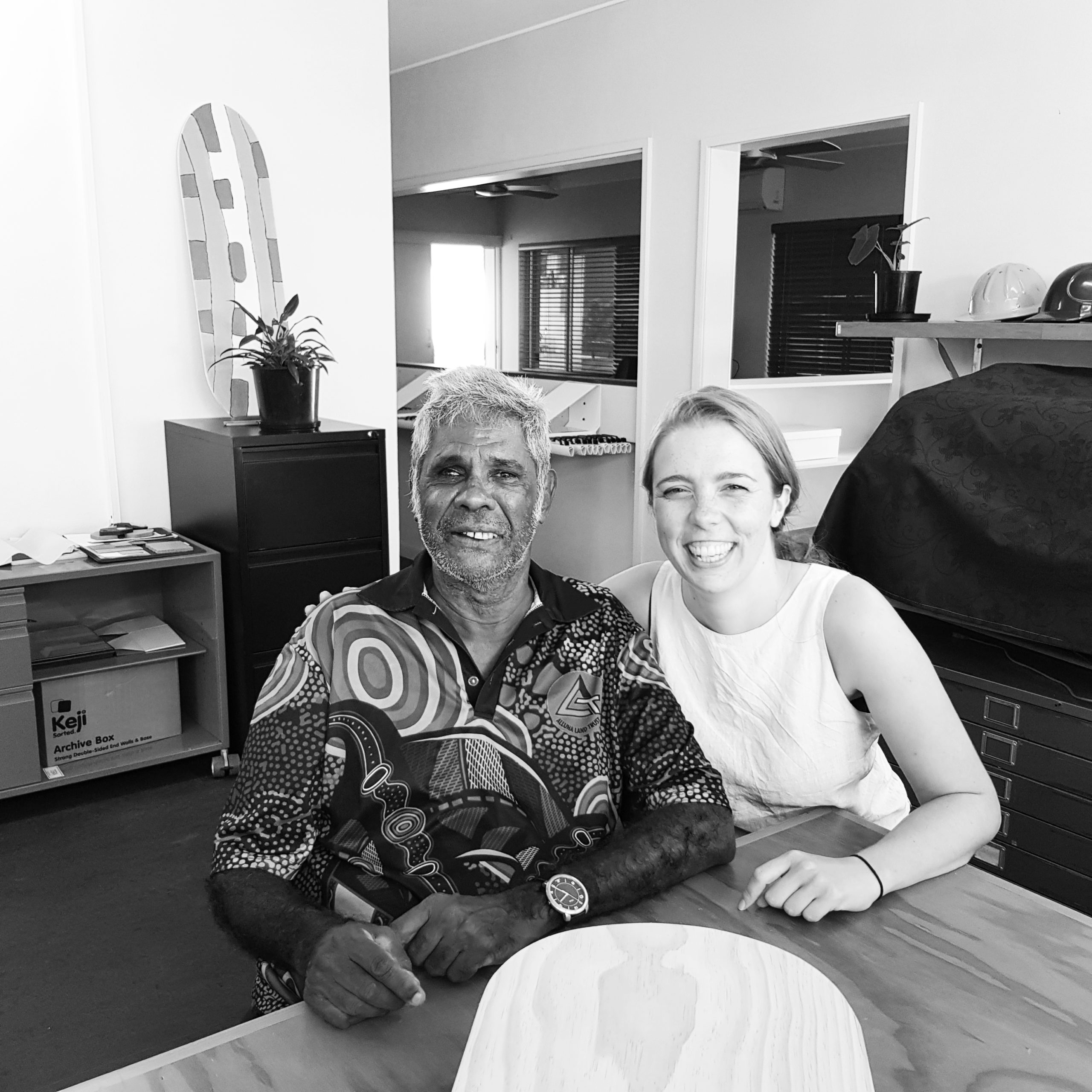
Photographer: Shaneen Fantin
2. What does working in the city (Melbourne) look like compared to working in Far North Queensland?
Melbourne and Cairns, where do I begin. I have learnt so much from both and had such different experiences. I think the easiest way to explain is in the difference in conversations I encountered.
I’m going to firstly talk about Melbourne and what I took from it because each urban centre has its own nuances and each person has their own experience of a city. My experience of Melbourne: the volume is up very high on every niche of design. It is very self-aware of its position, or if not, its debated, thrashed out, considered, and looked-at and reinvented with a quick pace and great enthusiasm. Design literacy invades so many aspects of how every day is carried out; from the tram you catch in the morning to the bar you stop at on your way home. There are bold thinkers and ambitious conversations happening about what Melbourne is going to be, and how. Right now, there are seventeen practices working together to reimagine and implement how in 2030 Melbourne can be a self-sustaining city. This is a project called ‘A New Normal’ https://www.normalise.it/the-full-story . In Melbourne, architects have the confidence and the platform to be leading these discussions and developers and government are listening. There is a collegiate attitude and there is a comradery in design.
In Cairns, the influence is in the opposite direction, we are not looking so much at other designers. We are at the edge of design, working between regional and remote areas. We are working in Torres Strait of which whole islands are in the very immediate threat of disappearing. We are influenced every day by climate. The environment and tropical setting is big, and the exposed nature of our daily life takes precedent. We are very literally working to the seasons in construction, and problem-solving detailing so buildings will last. As a result, the conversation is different. It is about what is happening in the lives of First Nations elders we work with, the status of native title determinations, land tenure, problem solving with limited materials and skills. It is about what is happening in the community where we have a project under construction. For example, this week we have been negotiating programs between Sorry Business. These form the basis of what we talk about and how we design.
Relationships and design are influenced by more factors outside of architecture rather than in it.
They are all incredible conversations, they just run in different directions; I see Melbourne is focused inward, and in Cairns we are focused outward. I feel there is a lot we can learn from each other about these approaches.
3. Has working in Cairns and the surrounding regions influenced your collaboration practices with clients, community and end-users?
This question flows brilliantly from your last. In every way, yes; but also no. There are fundamentals to good design everywhere that are based in deep listening, and not coming to the table with answers in hand. I think there are a lot of practices that aim for this approach, but there is a difference in how far it’s taken.
Working in Cairns and in remote settings, you are constantly talking to a diverse range of humans. We work with cattle station owners in the west, and with land and sea rangers in the Straits. Which gives a great breadth to the positions and opinions people have of place and architecture. There is less of a critical mass of the same opinion, and your clients are naturally more varied.
POD has taught me a lot about intercultural design. Working with First Nations peoples has taught me I to need to know more about the places we work in. Country and First Nations Culture has histories and stories we are not always privy to. I’m still learning about how colonial our position as architects can be and how we can continue to be destructive if we don’t work in a respectful way. If we don’t listen hard enough, don’t build those relationships. Architecture is also not the source or solution to all of this, but it plays a role. We all do.
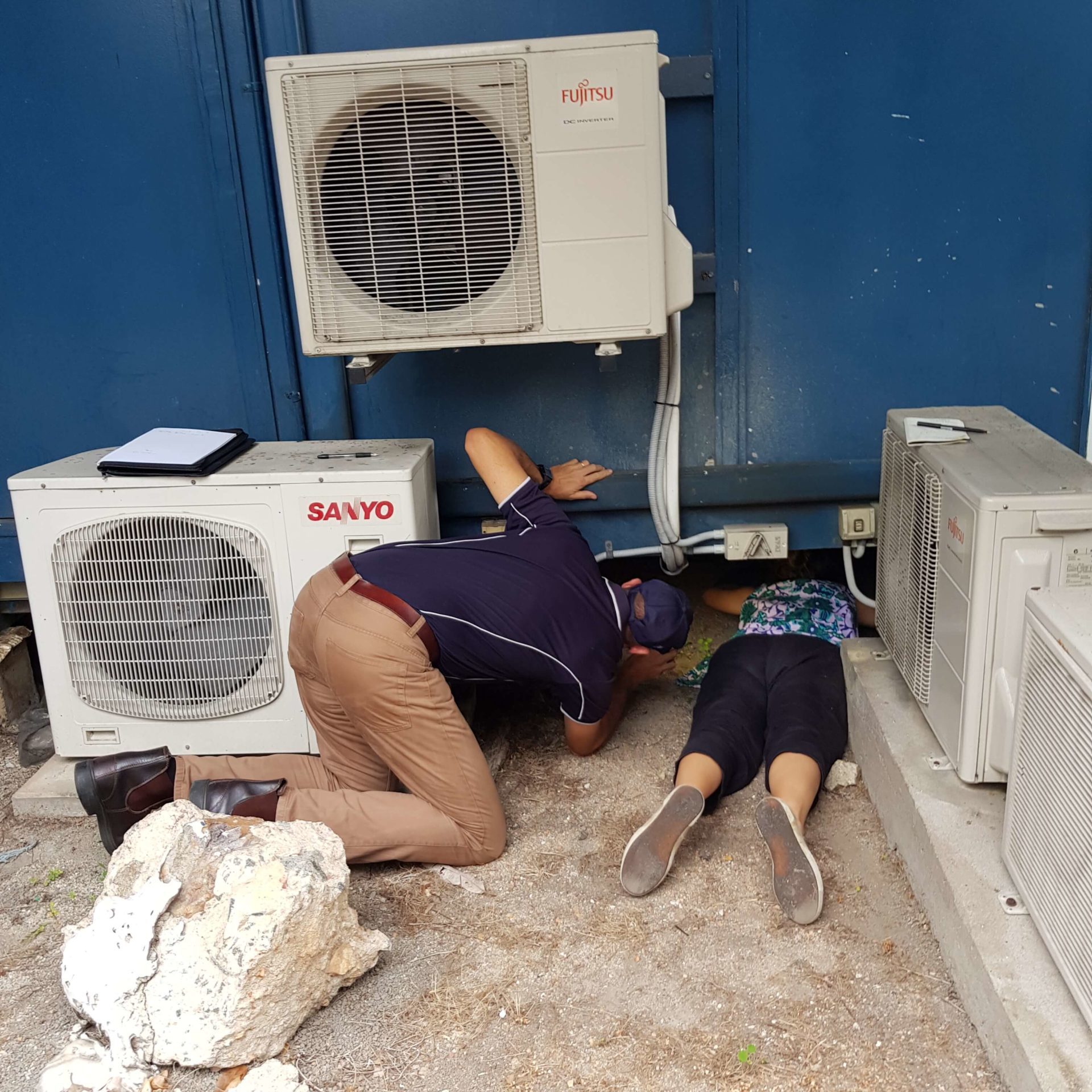
Photographer: Shaneen Fantin
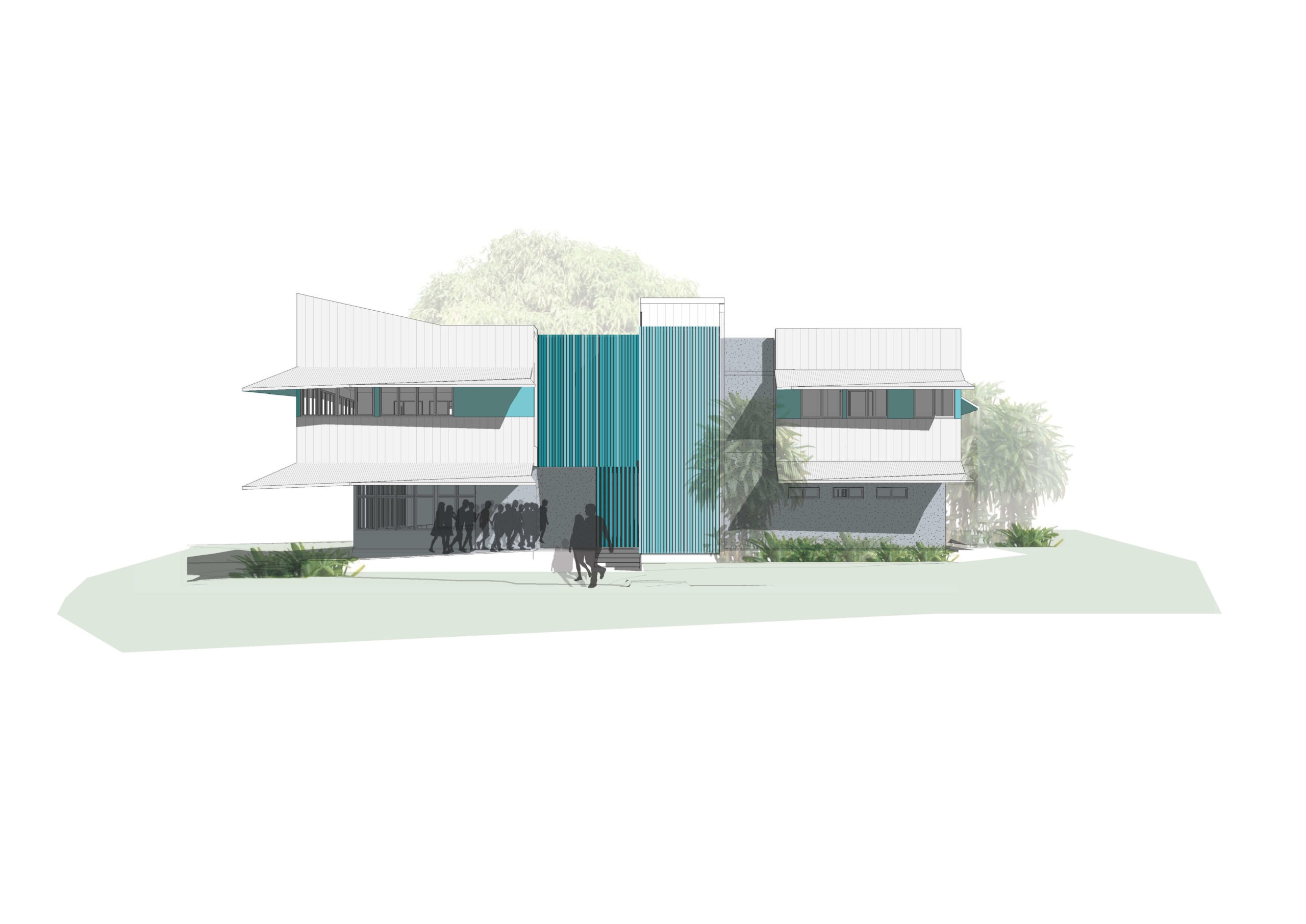
Image by POD
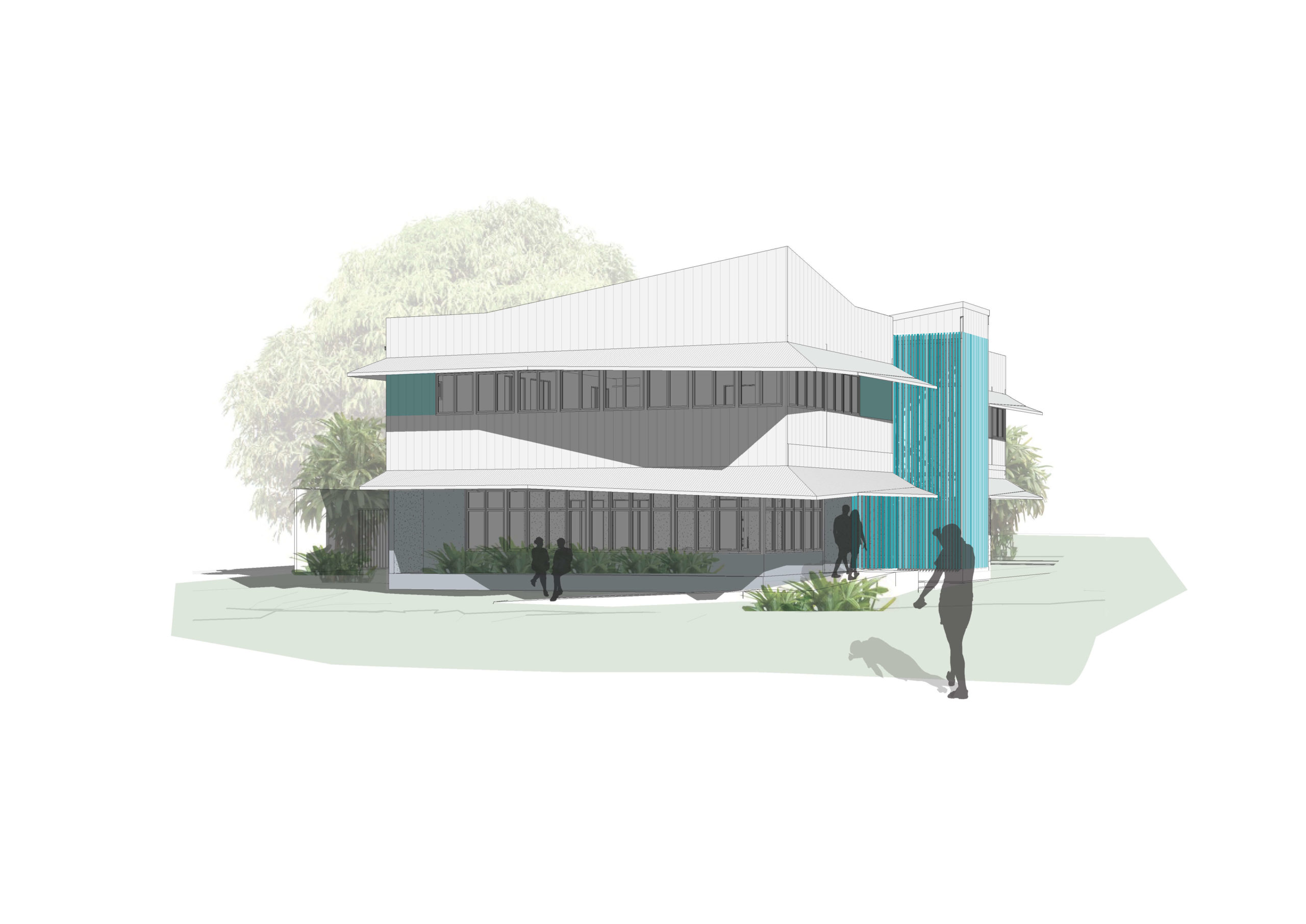
Image by POD
4. Designing for place and climate are always integral to the designing and placemaking in QLD and Australia. Has working in the regions further shaped how these constraints are addressed in your work?
POD recently completed a project for the Torres Strait Regional Authority, Land and Sea Rangers Unit on Waiben, Thursday Island in the Torres Strait. Designing for place and climate were integral to this project in the very nature of the people and work it accommodates.
The project is a hub for rangers and scientists working across 14 language groups across the Torres Strait so right away the challenge was how to work together to create a building that felt it was of the Torres Strait, but did not privilege one group over another. This was explored in form by signaling to chosen iconic forms, not replicating them, or directly depicting them. Forms included sails of pearl lugger ships, wings of the Torres Strait Island Pigeon and elements of TSI headdresses. The colour selections reflect the ocean viewed from level 1 of the building whilst the internal fabrics and external screen, art integral to the project, were designed by Francoise Lane of Indij Design (who is of both Kaurareg and Meriam).
In terms of climate, the Client TSRA (Torres Strait Regional Authority) was a champion in wanting to push sustainability, and connection with the outdoors with the agenda that this building was to be an exemplar in sustainability for its region. We began by tipping a portion of the building outside, which is where the overlap in culture and climate really combine, in how both the building is used and operates. The result meant meeting rooms became shaded courtyards. While working to the seasonal dial of Thursday Island to protect these spaces from seasonal ‘ sager ’ winds and ‘ kooki’ rains. The building also optimises passive cooling, has fans in office spaces, reuses the existing solar system from the original building, includes sustainable materials and finishes such as marmoleum and create endemic landscape spaces and deep shade.
As a result, the building is set to be the first NABERs- rated building in the Torres Strait and is modelled to achieve a 5.5-star NABERs rating, which we were told early on by our ESD consultant would be a challenge in the tropics.
5. On the topic of climate change – what are some key fundamentals for building for inundation that have you have learnt and developed whilst practicing?
I am no expert on inundation, there are lots of projects happening across Australia, in Cairns and up the Cape (Cape York) which involve building a lot of sea walls and destroying our finite coastal ecosystems. I have been involved with projects where the client and users expect the project to be inundated. In these circumstances it’s about making robust platforms above the flood level, letting the understory get flooded and providing safe spaces above flood levels. In this way occupants stay and ride it out until the cyclone or flooding stops.
I think learning about ‘non built’ and ‘softer’ strategies is helpful. I have been doing some work with Mangrove Watchers in Cairns that look at mangrove health and the power of mangroves to mitigate inundation and provide incredible carbon capture and important habitat. I am now of the opinion that we should give our coast lines over to mangroves, not sea walls.
Really, the people who are driving solutions in the north of Australia are insurance companies. We have recently seen a lot of coverage on this topic with recent flooding down south. A very non architectural response, but it is an industry that is really ramping up on where we can build and how when it comes to flood risk.
6. Before, you had mentioned intercultural design as part of the process at POD, how do we consider culture in design when we are not from the places we are building in, particularly in community?
I think about this a lot. Ideally it would be great if our architectural community were as diverse as the communities we design and work with, so then we would not have this issue in the first place.
What has been demonstrated to me is knowing you don’t know. Knowing that it’s about ensuring you are listening to the people who have the authority to speak for the community you are working with. And it is our responsibility as architects to ensure this is the case. It can be hard to navigate, and it’s not always possible, and often not included in our fees. But even when it’s not, how can we push to make sure the right voices are heard? It is our responsibility to do the hard work in this area.
It’s about being aware of dominant power structures and acknowledging that we are a part of that too. I have been taught that intercultural design is about being cognisant of the bias and world views we bring to a project.
7. Any advice on how we can better embrace further learning and discourse with those who have different cultural backgrounds with our own – in a genuine and meaningful way?
Two things that I have found helpful –
Make steps to leave your bubble. Become involved. I volunteer with the Frontier War Memorial Day that happens out annually in Cairns. There are lots of incredible organisations doing amazing work across Australia in many spheres that are not my own across ability, gender, ethnicity, etc.
Read, read, read! I find educating myself on the history of a place that I am working in very helpful. It will give you knowledge to ask more questions. Find what you can, understand the history of the place, culture, and practices. Frontier stories, places, and their pre-colonial histories. It is our responsibility to understand the histories of the Country we work on, and the people we work with.
8. The practice of architecture is, in many ways, more than just a job or career it becomes part of our everyday life and ethos. So far in your journey how has the crafting of architecture and design supported, interwoven or been challenged with the other aspects of life?
As I mentioned earlier, I was blindsided by my mother’s illness in 2017. I was incredibly fortunate to work for two incredible practices in the time that I needed support the most. The value of workplace support feels incredibly topical at the moment, and relevant to the architectural profession. I feel that there is a surge in understanding the value of a supportive and safe workspace, and it is something so worth fostering.
Architecture and studio culture has very privileged roots, and it’s easy to continue that trend that align in its whiteness, privilege, able-ness, and gender representation.
We all have different family and life circumstances. Even if we don’t know what is happening in other people’s lives. I’ve learnt and been shown the power of empathy and generosity in practice. In this interview I’ve talked a lot about listening and understanding and really its cultivating empathy in how we treat our clients, co-workers, and communities we work with. It’s important that this extends to where we work.
Life’s short, be kind and have fun. Architecture is only a part of it.
And a quick props and thanks to Six Degrees and POD for showing me how!
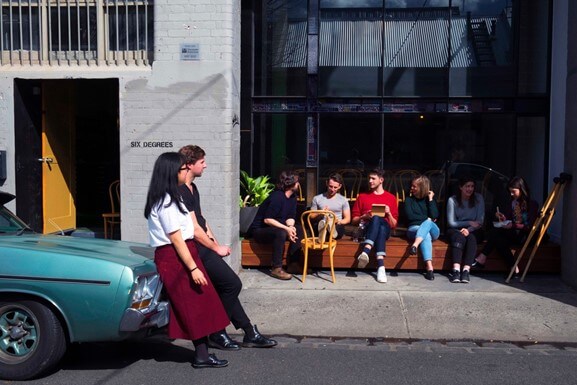
9. Any good advice for graduates and emerging architect as they navigate the industry and balance the concepts and movements that are important to them as individuals?
Stick to your gut feeling. Stay true to you. Follow your nose. Remember why you chose architecture.
10. What does it mean to you, to be an emerging architect? What is your view of how we, as a group, could be shaping the future of generations to come?
Great hard question! For me, I think to be to be emerging is a hopeful position, we are the ones who are going to shape future practice, we already are. There is tremendous responsibility that comes with working in the built environment in how we directly affect futures all the time. We sit at the confluence of many competing ideas and agendas which at times makes it incredibly hard. But there is also a power in our sphere of influence.
I am so passionate about advocacy, ethics, and sustainability in architecture. And watching the tides of conversations that are happening around the world on equality and climate I am hopeful that our emerging gang can take this and actively use architecture as the tool to bring about the changes we are talking about.
We are standing on the shoulders of giants, what a great time to surge into the next swells of thought. I am inspired by a group of emerging architects that are energised and already driving this change.
